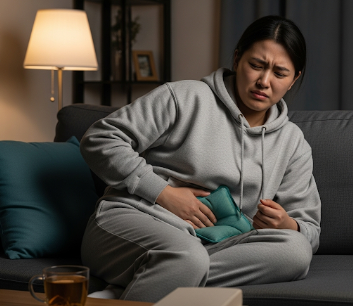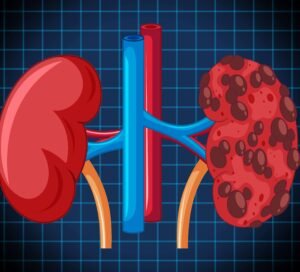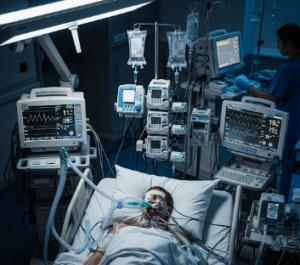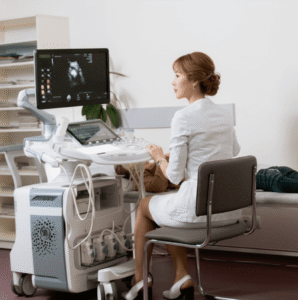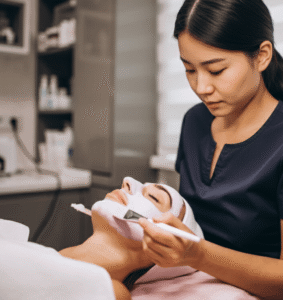Overview
Menstrual pain, medically known as dysmenorrhea, is a common condition affecting women of reproductive age. It involves cramping or discomfort in the lower abdomen before or during menstruation. While mild menstrual pain is normal, severe or debilitating pain can interfere with daily activities, work, or school.
In Korea, menstrual pain is treated using a combination of medical, lifestyle, and integrative approaches, including medications, hormone therapy, traditional Korean medicine, and pain management strategies to improve quality of life.
Key Facts
➤ Menstrual pain typically occurs 1–2 days before or during menstruation.
➤ Pain is usually located in the lower abdomen or pelvic area but can radiate to the lower back and thighs.
➤ Two types of dysmenorrhea exist: primary (without underlying pathology) and secondary (due to medical conditions).
➤ Common associated symptoms include nausea, vomiting, headache, fatigue, and bloating.
➤ In Korea, women have access to gynecologists, pain clinics, and traditional treatments for menstrual pain relief.
What is Menstrual Pain?
Menstrual pain is caused by contractions of the uterus triggered by hormone-like substances called prostaglandins.
➔ Primary dysmenorrhea – pain without underlying disease, usually beginning 1–2 years after menarche.
➔ Secondary dysmenorrhea – pain caused by endometriosis, fibroids, pelvic inflammatory disease, or adenomyosis.
The severity of pain may vary from:
- Mild discomfort that is manageable with home remedies.
- Moderate pain interfering with daily tasks.
- Severe pain causing nausea, fainting, or inability to perform normal activities.
Symptoms Related to Menstrual Pain
➤ Lower abdominal cramping – often rhythmic and synchronized with uterine contractions.
➤ Pain radiating to lower back, thighs, or hips.
➤ Nausea, vomiting, or diarrhea in some women.
➤ Headache, dizziness, or fatigue during menstruation.
➤ Mood changes, irritability, or emotional distress in severe cases.
➤ Bloating and breast tenderness may accompany pain.
Causes / Possible Causes
Primary dysmenorrhea
➤ High levels of prostaglandins causing uterine muscle contractions and reduced blood flow.
➤ Often begins during adolescence after ovulatory cycles start.
➤ Not linked to any structural or medical abnormalities.
Secondary dysmenorrhea
➤ Endometriosis – growth of uterine-like tissue outside the uterus.
➤ Uterine fibroids – noncancerous growths causing pain and pressure.
➤ Adenomyosis – inner lining of the uterus grows into the muscular wall.
➤ Pelvic inflammatory disease (PID) – infection of female reproductive organs.
➤ Ovarian cysts – fluid-filled sacs on the ovaries causing pain.
Other Contributing Factors
➤ Early menarche or heavy menstrual flow.
➤ Family history of severe menstrual pain.
➤ Stress, anxiety, or poor sleep affecting pain perception.
➤ Sedentary lifestyle or lack of physical activity.
Risk Factors
➤ Women under 30 years of age.
➤ Heavy menstrual bleeding or long periods.
➤ Smoking or alcohol consumption.
➤ High body mass index (BMI) or obesity.
➤ History of pelvic inflammatory disease or reproductive tract abnormalities.
➤ Family history of dysmenorrhea or endometriosis.
Complications
Severe menstrual pain may lead to:
➤ Absenteeism from work or school due to debilitating cramps.
➤ Chronic fatigue and reduced physical activity.
➤ Emotional distress, anxiety, or depression.
➤ Difficulty in daily functioning and lower quality of life.
➤ Unrecognized secondary causes such as endometriosis or fibroids progressing without treatment.
When Should I See My Doctor?
Consult a healthcare professional if:
➤ Menstrual pain is severe, worsening, or unresponsive to home remedies.
➤ Associated with heavy bleeding, irregular periods, or clotting.
➤ Pain begins after age 25 or occurs suddenly after being previously pain-free.
➤ There are symptoms like infertility, pelvic masses, or chronic pelvic pain.
➤ Over-the-counter painkillers fail to provide relief.
Care and Treatment
Lifestyle and Home Measures
➤ Apply heat therapy using warm pads or baths to relax uterine muscles.
➤ Gentle exercise, yoga, or stretching to improve blood flow.
➤ Maintain a balanced diet rich in magnesium, calcium, and omega-3 fatty acids.
➤ Avoid excessive caffeine, alcohol, or salty foods.
➤ Stress reduction through meditation, breathing exercises, or relaxation techniques.
Medical Treatments
➤ NSAIDs (e.g., ibuprofen) to reduce pain and inflammation.
➤ Hormonal contraceptives – regulate cycles and reduce prostaglandin production.
➤ Prescription medications for severe secondary dysmenorrhea.
➤ In cases of underlying disease, surgery or specialized therapy may be required.
Preventive Measures
➤ Regular physical activity to improve circulation and reduce cramps.
➤ Maintain healthy weight to lower hormonal imbalance risks.
➤ Track menstrual cycles to identify patterns and seek early intervention.
➤ Routine gynecological checkups to detect secondary causes early.
Treatment Options in Korea
Korean healthcare facilities provide comprehensive management for menstrual pain:
Diagnostic Services
➤ Pelvic ultrasound for fibroids, cysts, or structural abnormalities.
➤ Hormonal evaluation for irregular cycles or endocrine disorders.
➤ Laparoscopy for diagnosis of endometriosis or pelvic pathology.
Therapies and Supportive Care
➤ Prescription NSAIDs, hormonal therapy, and oral contraceptives.
➤ Physical therapy including pelvic floor exercises.
➤ Traditional Korean medicine such as acupuncture and herbal therapy for symptomatic relief.
➤ Counseling and lifestyle guidance to manage pain and stress.
➤ Multidisciplinary care combining gynecology, pain management, and rehabilitation.
✅ In summary: Menstrual pain (dysmenorrhea) is common among women of reproductive age, caused by uterine contractions and sometimes underlying gynecological conditions. While often manageable with home care, persistent or severe pain requires medical evaluation. In Korea, women benefit from advanced gynecological care, medications, lifestyle interventions, and traditional therapies to relieve pain, address underlying causes, and improve daily functioning.

